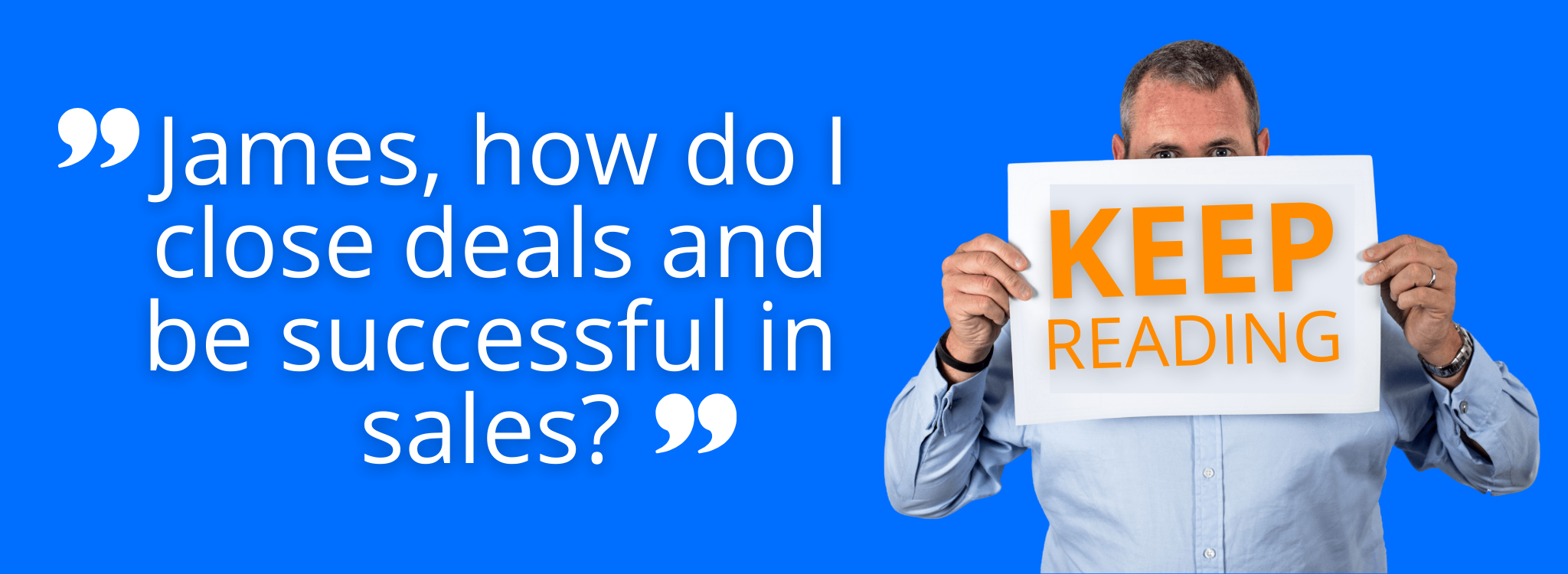
In this blog I am going to share with you a few phrases that you can use to close successfully, but also going to share with you one big warning at the start of this blog.
Let me let you into a little secret, people say to me “Oh yeah, well I have heard that you can become an expert in closing by meeting someone and saying a few words and then will close them.”
I’m sorry but that just doesn’t happen! Sure there are things that you can say to shape the call and have the conversation to go in the way you want to do it, but it is highly unlikely that you will close a deal on the first time that you meet someone. No matter what phraseology you use, if you do something too soon that makes the prospect feel pushed, chances are you will lose that opportunity.
I believe that closing is a process that happens when, over a period of time, you’ve built up a relationship with the prospect and understood what’s going on in their world, and you can show them how your solution can make their problem or desire go away.
When you do this you are more likely to then close them and can use certain phrases to do this. But!! This comes after you have spent time building up a relationship with them.
There is a great saying in sales that I use all the time which is: Desperation is a stinky perfume and if you act too desperate in business, the chances are you won’t win the chance to work with that client. Be patient and continue to give value then you will!


1. “Which of the two services would you like to move forward with?”
This is what we call an assumptive close.
If you’ve presented two services to the other side, it’s basically saying to them which of these two would you like to go forward with and hopefully they’re going to say “service number one”, in which case you can say, “fantastic, I’ll get the paperwork in place” and move forward.
But… if they come back to you and say, “I’m not sure either one of those is for us”, then it means that you have further work to do. If that happens the way you handle the objection is to say…
- “What parts of what we’ve offered don’t fit well?”; or
- “What parts of the solution don’t sit well with you?”
The reality is, if you use this phrase (the assumptive close), it only works if all your sales elements are in place and your prospect is keen. If you use the assumptive close at the wrong time, it will go badly wrong!
2. “It sounds like you’d rather stay with these issues and not get them resolved?"
The natural reaction (especially when you have understood their problems) is that they will come back and say “no, no, we want to get them resolved.”
If that happens you can say “That’s fantastic, let’s move forward and work together.”
It’s using the word “no” and getting the other person to say no in order to put them in control. Put yourself in a position to show them a solution that could solve the problem!
Try some of these effective “no” questions:
- How would it feel to still be in this situation in a few months time?
- It sounds like you want to stay in this situation for a few months still, which sounds like you don’t want to get this resolved now?
- It sounds like you don’t have a passion to change things right now?
Getting them to say no means you can then say, “great let’s pick a solution to get things moving forward.”
The only thing that is going to stop them is if they don’t believe you can do it, or they don’t trust you to do it. If that’s the case then it’s more work to do!
3. “John, when would you like to have this solved by?”
What this does is hopefully put a time scale to John so that he can indicate that he wants to get things solved by. This is a great opening for you to say…
“Great, if I work backwards from [date], we need to get things started by [this date]. In order to move things forward, shall I get the paper work sorted?”
By allowing the person to define the date and the time by which they want to get the problem resolved, working backwards from that point gives them a structure that enables them to say “Yes, make sense to get it done now, let’s get a timeline in place.”
It’s our job in business and sales to show solutions, and give that time frame they can feel comfortable about to move things forward.
4. “Hey Sally, is there any reason why you wouldn’t want to work with me and get this deal completed?
The fourth closing phrase is a phrase that sometimes I like to use when I have been having a few conversations with someone and maybe been dancing around the subject of working together for a while.
I’ll say it in a tone that’s really simple and subtle, showing my empathy and desire to understand their side of things. By asking this, what I’m asking them to do is to tell me outright what is stopping them from moving forward. Hopefully they will be keen and can move things along, but if they say they are uncomfortable about [this], then I can address it better get inside their mind about the problem they mentioned.
Prospects commit to doing business when they feel assured and they feel comfortable that their investment is going to give them a result.
5. “What do you need to see to feel comfortable to move forward?”
By doing this you are asking them out right what do they need to see, so that you can move forward. Hopefully they say nothing, or they will tell you exactly what is bothering them.
If they offer you something that’s bothering them, it’s an opportunity for you to show them evidence of how you have helped with working solutions for other people in their similar situation.
Underlying issues behind people’s decisions are always the reason that stop them from making decisions. We must get inside their minds and try forecast what they are thinking or what are the worries they may have.
These are some of the phrases I’ve used and there’s a range of other phrases that I have available in a resource here that can help you to close deals.
Remember though what I said at the beginning of this blog that if you start closing deals at the wrong time or putting pressure on people to get into situations that they feel uncomfortable with, don’t be surprised to see them run away for you or not wanting to work with you.
We don’t want to be desperate. We want to approach at the right time – only once we have built up a relationship with them, we understand them, we understand their issues, what they are going through, and we have shown them how we can help. We then show evidence and case studies and then they are in the best position to say YES.
This is how you close more deals and be successful at sales!
